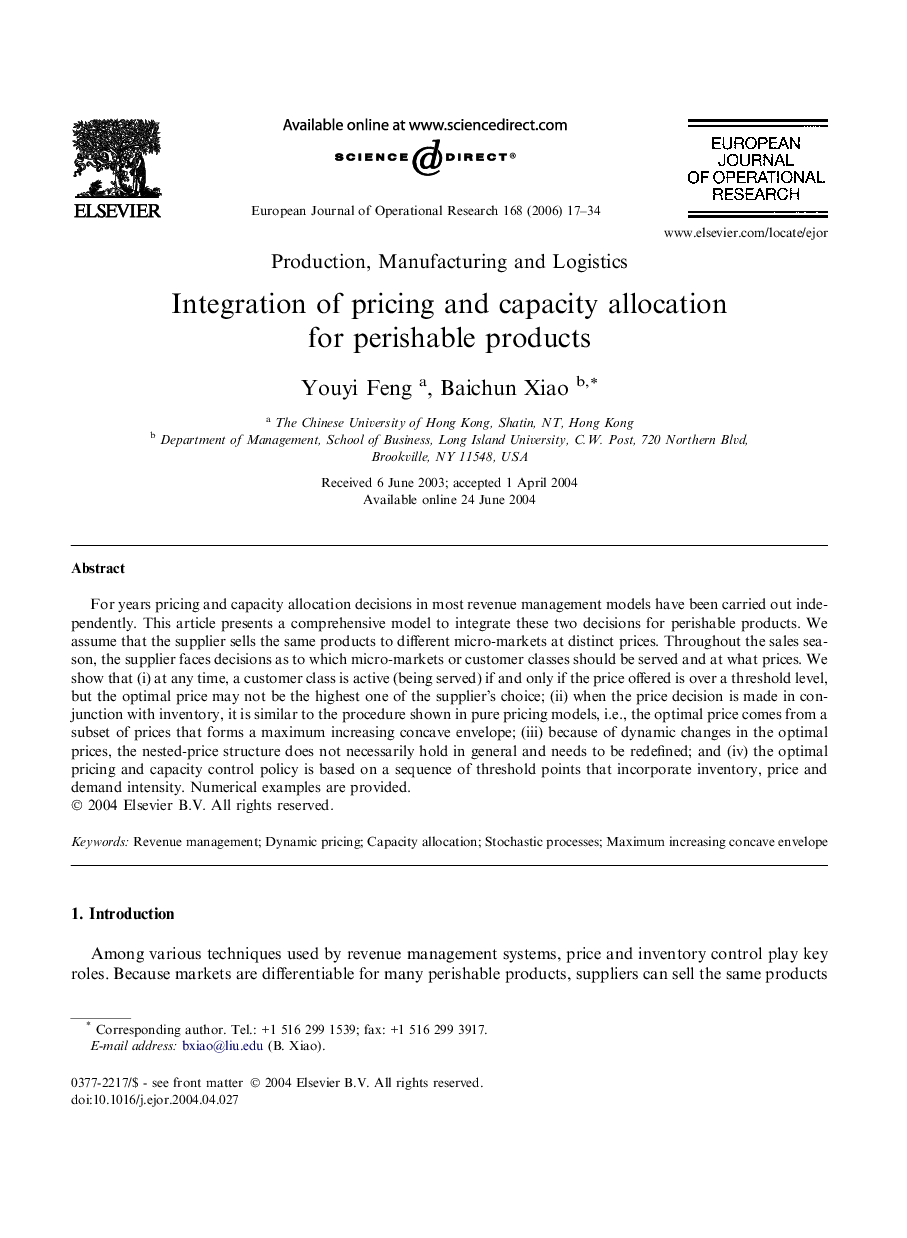| Article ID | Journal | Published Year | Pages | File Type |
|---|---|---|---|---|
| 482833 | European Journal of Operational Research | 2006 | 18 Pages |
For years pricing and capacity allocation decisions in most revenue management models have been carried out independently. This article presents a comprehensive model to integrate these two decisions for perishable products. We assume that the supplier sells the same products to different micro-markets at distinct prices. Throughout the sales season, the supplier faces decisions as to which micro-markets or customer classes should be served and at what prices. We show that (i) at any time, a customer class is active (being served) if and only if the price offered is over a threshold level, but the optimal price may not be the highest one of the supplier’s choice; (ii) when the price decision is made in conjunction with inventory, it is similar to the procedure shown in pure pricing models, i.e., the optimal price comes from a subset of prices that forms a maximum increasing concave envelope; (iii) because of dynamic changes in the optimal prices, the nested-price structure does not necessarily hold in general and needs to be redefined; and (iv) the optimal pricing and capacity control policy is based on a sequence of threshold points that incorporate inventory, price and demand intensity. Numerical examples are provided.
